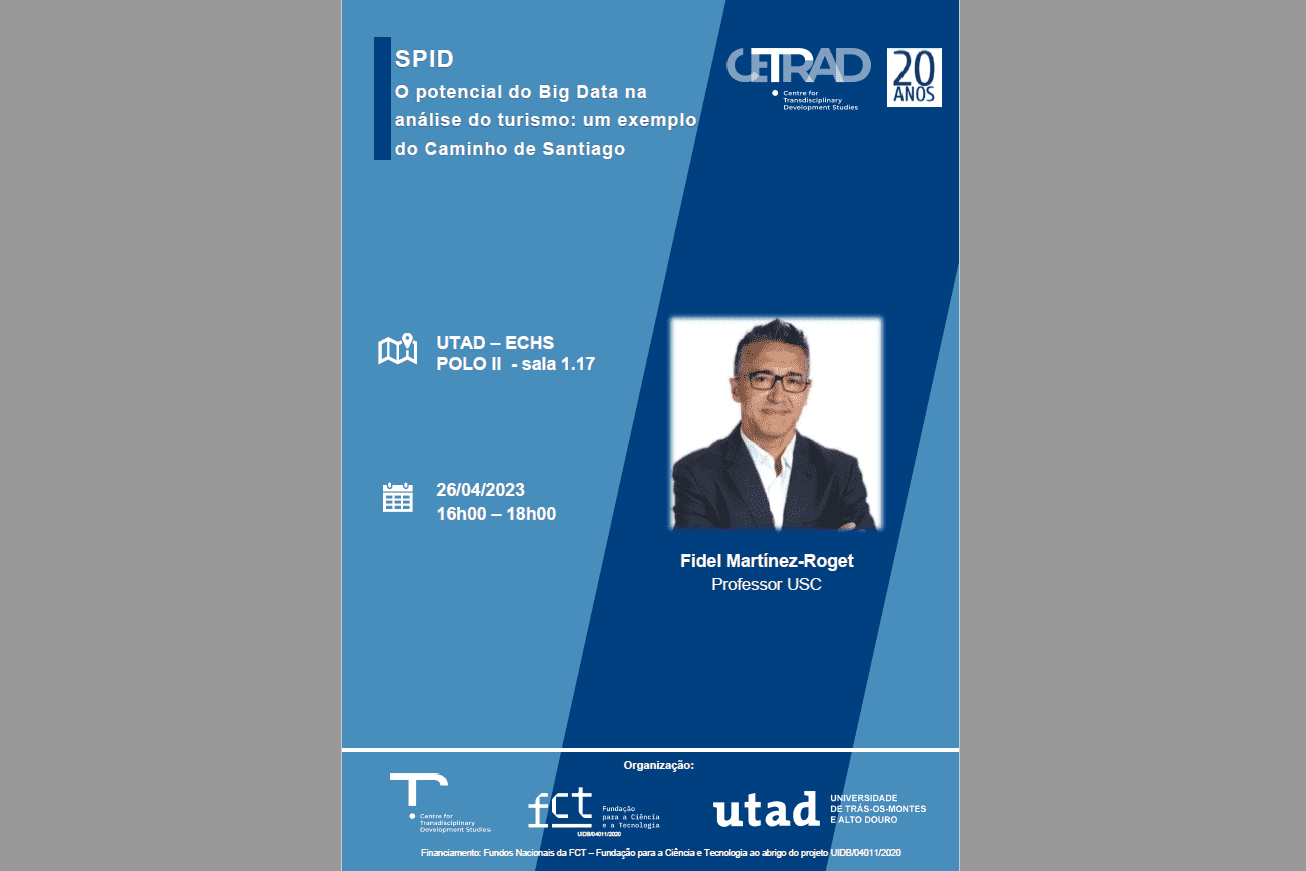
SPID on the theme: The potential of Big Data in tourism analysis – an example of the Camino de Santiago
Next April 26th (Wednesday) at UTAD – ECHS – POLO II, room 1.17
Secondary data from official statistics are mostly insufficient for the analysis of the tourism sector, especially at sub-national levels and for specific tourism segments. The digital revolution and ICTs make the use of digital tools essential in tourism planning. Today, we have massive data of various kinds that allow a more exhaustive knowledge of tourism demand. Monitoring mobile phones or the use of credit cards is already common within the activities of institutions responsible for statistical information. The tourist is no longer just a mere receiver of information, but also creates content (photos, videos, opinions) and publishes it on social networks.
A group of USC researchers carried out a study focusing on the Camino de Santiago, in which 1,506 online surveys were conducted with pilgrims who have already done the Camino de Santiago, 332 online surveys with pilgrims who intend to do the Camino in the near future and we analysed about 1.7 million comments from the social network Twitter with the aim of analysing feelings towards the Camino de Santiago.
Biographical note:
Fidel Martínez-Roget holds a PhD in Economics and is a professor in the Department of Applied Economics at the University of Santiago de Compostela (USC) (Spain). Between 2005 and 2011, he was secretary of the Centre for Studies and Research in Tourism (CETUR) at USC. His main research areas are related to the analysis of rural tourism, tourism impacts and economic welfare. He was principal investigator of the projects “Software for calculating the economic impact of tourism at regional and local level” and “Indicator of tourism loyalty to Galicia”. He has published in international journals such as Annals of Tourism Research, Tourism Management, Tourism Economics, Regional Studies, Social Indicators Research or EURE.

